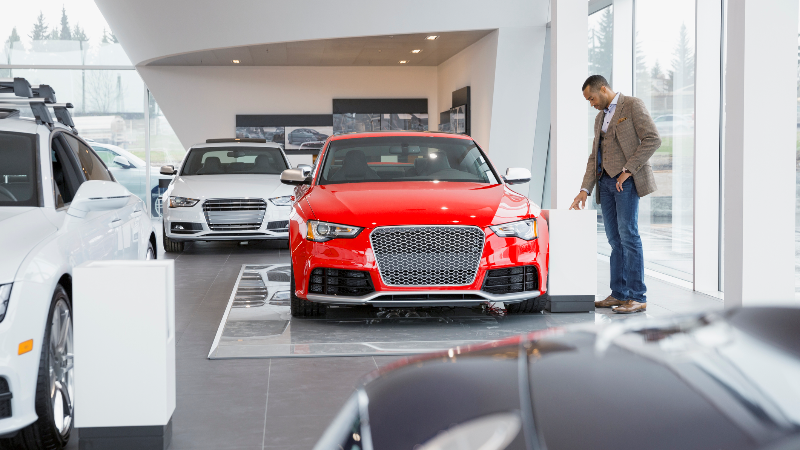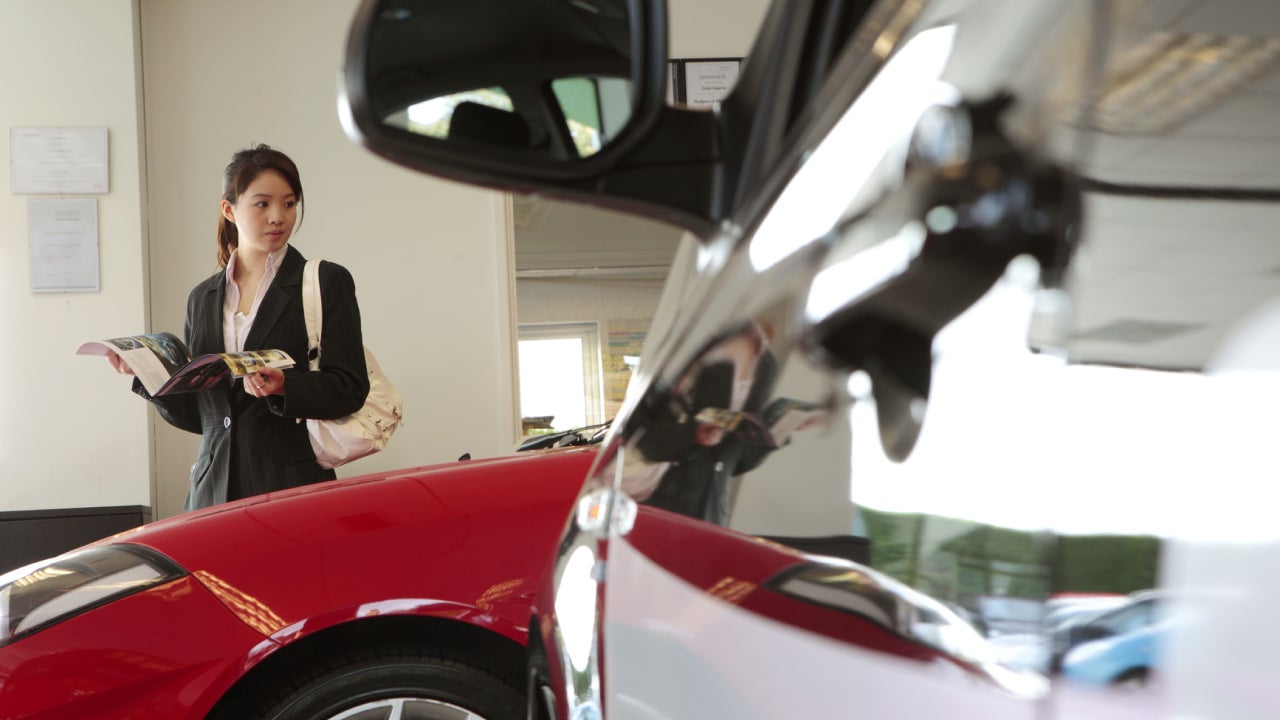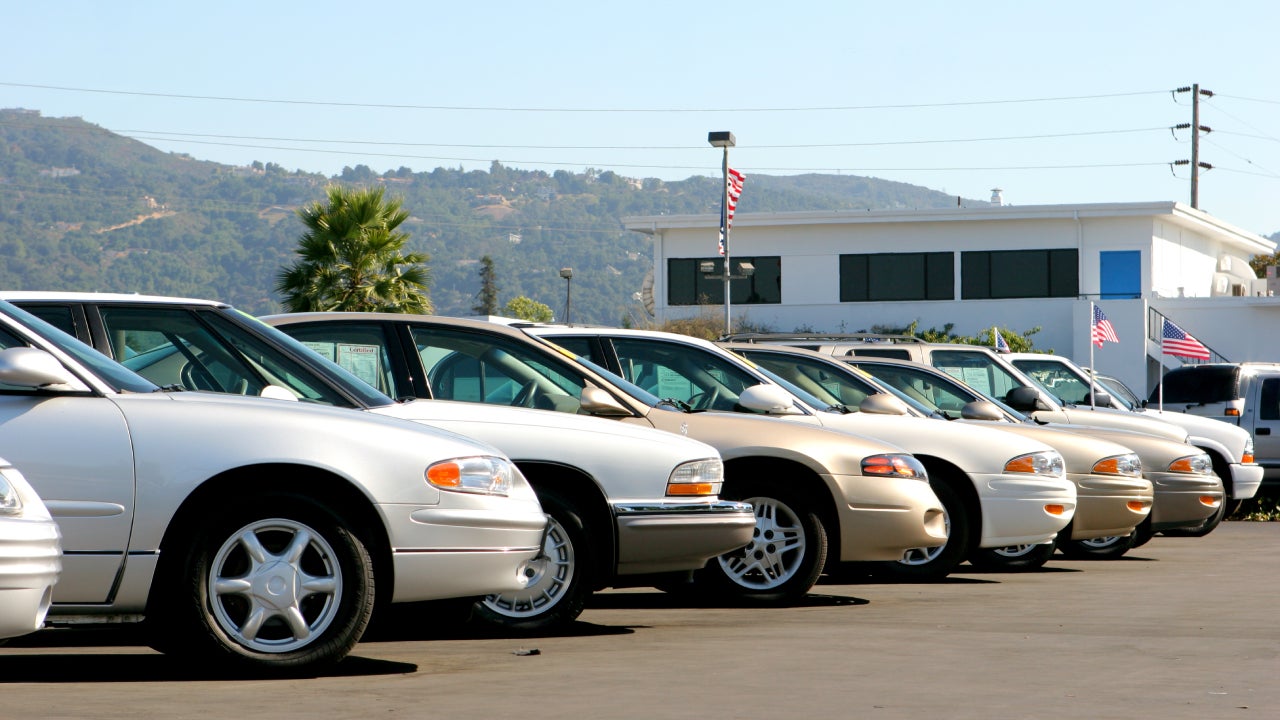Buying car insurance for a new car

Buying a new car is often a cause for celebration, but it may also lead to a potentially alarming question: how much will my insurance go up with a new car? Car insurance for a new car can be more expensive, especially if you’ve been driving an older car in the past or have only the minimum required coverage in your state. In this guide to insurance when buying a new car, Bankrate’s insurance editorial team reviews the types of coverage you may want or need and details how you can go about finding the best policy at the most affordable price.
How to get car insurance for a new car
In almost every state, you will need to have an active policy in hand before you can drive your new car off the lot. How you purchase that policy, however, may vary depending on your situation.
Buy a new policy before purchasing your new car
If you’ve already worked with the dealer to identify your new car and have the VIN in hand, you can purchase your policy even before you step into the vehicle showroom. With basic information about your new car, you can call your insurer or connect with them online to ensure your policy is active. If you do this, print off your declarations page or have your insurer’s mobile app available to prove to the dealer that you have coverage when you go in to pick up your car.
Save a quote and purchase the policy while at the dealership
If you’ve done enough research to know the year, make and model of the car you’re going to purchase but don’t have a VIN yet, you can still work with your insurer to determine the scope and approximate cost of your coverage — and then it’s a simple matter of calling your agent or going online to input the VIN once you know it. Remember that there may be minor changes to your quoted price once your insurer has the VIN, because that information tells them more about the car, such as trim level or installed safety features.
Allow the dealer to provide a policy
If you haven’t done any groundwork with your insurer before you head for the dealership, you can ask your dealer to arrange for your coverage. Many car dealerships have in-house agencies or relationships with insurance companies, so they can handle the details for you. Although this makes it easy on you, it may not give you the best price, since a dealer is unlikely to shop around for the best quote for you or offer you the best coverage options for your needs.
Why it costs more to insure a new car
You may pay more for your new car than if you are driving an older vehicle for several reasons. In many cases, your state’s minimum coverage requirements may not be enough.
If you are financing or leasing your vehicle, your lender will likely require you to purchase full coverage, including optional collision and comprehensive insurance. Although this generally costs more than minimum insurance, it offers more robust protection for your own vehicle in an at-fault accident. If you’ve been driving an older vehicle, you may not need or want this level of insurance.
Another factor that may affect your car’s insurance cost is the likely presence of high-tech safety features in your new car. The more protection a car has against accidents, the less you are likely to pay for your policy. On the flip side, however, high-tech features can be expensive to repair, which may cause insurers to increase your premium. Either way, they play a role in determining what you will pay for your policy.
Necessary and recommended coverage
As stated above, your legally required insurance coverages vary depending on the state in which you reside. When you purchase a new vehicle, you will likely be required to carry the coverages below, whether by your lienholder, leasing company or your state.
- Comprehensive: Comprehensive insurance is often called “other than collision coverage” because it helps pay for damage caused by any vehicle mishap other than an accident. This may include car theft, vandalism or weather-caused damage. It has a deductible that you will need to pay before your coverage takes over.
- Collision: As the name suggests, collision helps pay for any damage caused to your own car by an at-fault accident. Like comprehensive, it is generally required if you have a car loan or lease. Also like comprehensive, it includes a deductible that must be paid before coverage begins.
- Bodily injury: Bodily injury liability coverage pays for the other party’s medical expenses if you are at fault in the accident. Usually, this coverage is broken down on a per-person, per-accident basis. For instance, you might see 25/50 under bodily injury coverage on your policy documents. This means you have $25,000 per person and $50,000 per accident in bodily injury coverage. This coverage is mandatory in almost every state.
- Property damage: Property damage liability coverage helps to pay for damage that you cause to someone else’s property in an at-fault accident. For example, if you hit another vehicle and have $25,000 in property damage liability, your policy will pay up to $25,000 to fix the other person’s car. Like bodily injury coverage, property damage is usually mandated by the state.
Sometimes, car insurance add-ons are appropriate and advisable. If you have recently purchased a new vehicle or you’d like to bridge the gap between your car’s actual value and the amount you still owe, you may want to look into the following coverages:
- New car replacement insurance: When you drive your new vehicle out of the dealership, it depreciates in value. New car replacement coverage will ensure that your insurance company will pay the replacement cash value of the vehicle, rather than the actual cash value (or how much the vehicle is worth, minus depreciation). Although some of the best car insurance companies offer this optional coverage, not all do.
- Gap insurance: Gap insurance seeks to bridge the gap between the amount you owe on your new vehicle and the total cash value it carries. This scenario is ideal for those who currently owe more than the vehicle’s worth.
Another optional coverage that can be of benefit is accident forgiveness. This endorsement “forgives” a single accident, whether or not you are the cause, so your premium will not increase afterward. Not all insurers offer it, although a few include it as part of a basic policy. If you are generally a safe driver, this endorsement can offer you the peace of mind in knowing that a once-in-a-great-while accident will not mean that you’ll pay more for your policy.
How to transfer insurance to a new car
If you already have an auto insurance policy in place, it should be easy to transfer coverage from one vehicle to another, or to add the car to your existing policy. Simply contact your insurance provider by telephone or log in to your account online to make changes.
However, if you choose to maintain your current insurance policy, comparing car insurance quotes may still be beneficial. Buying a new car could be the perfect time to re-evaluate your insurance needs, and you might be able to find a cheaper company that could help offset the higher car payment you may now have after your new purchase.
Frequently asked questions
Why we ask for feedback Your feedback helps us improve our content and services. It takes less than a minute to complete.
Your responses are anonymous and will only be used for improving our website.
You may also like

What is non-standard auto insurance?

Do you need insurance to buy a car?

How to get car insurance for new drivers



